Researchers want invasive aquatic critters out of Great Lakes ballast water
Great Lakes Echo
http://greatlakesecho.org/2020/10/12/researchers-want-invasive-aquatic-critters-out-of-great-lakes-ballast-water/
Great Lakes Echo
http://greatlakesecho.org/2020/10/12/researchers-want-invasive-aquatic-critters-out-of-great-lakes-ballast-water/
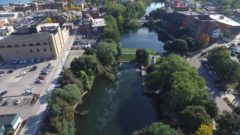
Four dams were built along the Boardman River in Northwest Michigan to generate hydroelectric power for Traverse City.
But by 2004 they were no longer economically viable. A decision was made to remove three of the dams and renovate the last one in downtown Traverse City.
Now the removal of the dams has changed the nature of the river and allowed native fish to return.
Great Lakes Now
https://www.greatlakesnow.org/2020/10/damming-decisions/
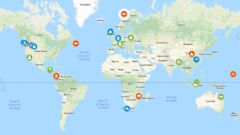
Spoiler Alert: If you haven’t yet watched “The Age of Nature,” you might want to limit your clicks here.
That way when you’re viewing the stunning aerial footage of the Panama Canal and the Himalayas or getting alongside orcas, wolves and elephants, or hearing from fishermen, scientists and youth activists in the documentary, you’ll get to experience the full impact of seeing it all for the first time.
Great Lakes Now
https://www.greatlakesnow.org/2020/10/mapping-age-of-nature-locations-pbs-documentary-great-lakes-sites/
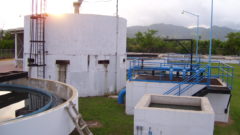
PFAS, short for per- and polyfluoroalkyl substances, are a group of widespread man-made chemicals that don’t break down in the environment or the human body and have been flagged as a major contaminant in sources of water across the country.
Keep up with PFAS-related developments in the Great Lakes area.
Great Lakes Now
https://www.greatlakesnow.org/2020/10/pfas-news-landfills-wisconsin-action-plan-congress/

By Brett Walton, Circle of Blue
The Great Lakes News Collaborative includes Bridge Michigan; Circle of Blue; Great Lakes Now at Detroit Public Television; and Michigan Radio, Michigan’s NPR News Leader; who work together to bring audiences news and information about the impact of climate change, pollution, and aging infrastructure on the Great Lakes and drinking water.
Great Lakes Now
https://www.greatlakesnow.org/2020/10/house-democrats-cdc-halt-water-shutoffs-pandemic/
Recently, the Michigan Supreme Court struck down Governor Whitmer’s moratorium on water shutoffs and restoration of water services to residents. NOW is not the time to resume water shutoffs – we are heading into flu season during a pandemic and the CDC says washing hands frequently is the best prevention to spreading COVID-19.
COVID-19 has already put an unprecedented number of Michiganders out of work and with children learning remotely, we must ensure all families have access to running water in their homes for good individual and public health. The Henry Ford Global Health Initiative found that patients who live on blocks that experienced water shutoffs were 1.55 times more likely to be diagnosed with a water-associated illness, not to mention the mental health stress that comes along with a lack of running tap water.
No one should have to worry about how they will wash their hands and masks, cook their food, and get their drinking water. Please take action today by calling on and writing to your legislators to keep water on and restore water services to those still without running water in their homes.
Blog – Freshwater Future
https://freshwaterfuture.org/uncategorized/take-action-now-keep-tap-water-on-during-covid-19/
The Anishinaabe people lived along the Great Lakes for centuries before European explorers arrived, however the history of indigenous people is overlooked by many. Organizations in Michigan are working to include more details about the lives of Native Americans in exhibits, museums, and statewide historical markers. Read the full story by Upper Michigan’s Source.
Great Lakes Commission
https://www.glc.org/dailynews/20201009-anishinaabe
The American shipping industry has kept itself safe on the Great Lakes during the pandemic, but the shippers are feeling the economic impact of the shutdown that caused declines in manufacturing output. Read the full story by Duluth News Tribune.
Great Lakes Commission
https://www.glc.org/dailynews/20201009-ore-down
A western Michigan woman honored by the federal government for her environmental activism is attributing her recent cancer diagnosis to toxic PFAS chemicals that polluted her community’s drinking water supply. Read the full story by The Associated Press.
Great Lakes Commission
https://www.glc.org/dailynews/20201009-pfas-activist
Sleeping Bear Dunes turns 50 this month and is a cornerstone of tourism in northern Michigan. But it took nearly a decade to establish the National Park site because of heated opposition from residents. Read the full story by Interlochen Public Radio.
Great Lakes Commission
https://www.glc.org/dailynews/20201009-sleeping-bear
Western Lake Erie’s summer 2020 algal bloom is still present and visible from space. With fall temperatures dropping, the remaining toxic microcystin chemicals will soon deteriorate. Read the full story by The Toledo Blade.
Great Lakes Commission
https://www.glc.org/dailynews/20201009-tough-bugger
The Indiana Department of Environmental Management will host a free virtual webinar series to teach about watershed protection and restoration efforts within the Lake Michigan basin. Read the full story by the Indiana Environmental Reporter.
Great Lakes Commission
https://www.glc.org/dailynews/20201009-idem
Researchers at Michigan Technological University have partnered with a Canadian shipping company to develop autonomous marine vessels to use for cargo shipping on the Great Lakes. Read the full story by State Scoop.
Great Lakes Commission
https://www.glc.org/dailynews/20201009-boat-research
Temperamental fall weather and high lake levels threaten a beleaguered stretch of shoreline road in Chatham-Kent, Ontario, that has been closed due to erosion. Read the full story by The Community Press.
Great Lakes Commission
https://www.glc.org/dailynews/20201009-lake-erie-autumn
An upstate New York couple is scrambling to protect their water supply after they were denied state funding to repair damages from record flooding on Lake Ontario in 2019. Read the full story by WWNY – TV – Watertown, NY.
Great Lakes Commission
https://www.glc.org/dailynews/20201009-ontario-flooding-dw
To make beaches safer, the Great Lakes Surf Rescue Project confronts the issue of drowning on five fronts: gathering statistical data, education, support and advocacy for drowning victims and their families, lifeguard and service training and first responder training. Read the full story by the Petoskey News-Review.
Great Lakes Commission
https://www.glc.org/dailynews/20201009-swimming
It’s just the beginning, but Saugeen Shores, Ontario, is taking its first crack at protecting part of its shoreline from erosion. Hardening the shoreline is happening up and down the Lake Huron coast, as record setting lake levels batter the water’s edge. Read the full story by CTV News.
Great Lakes Commission
https://www.glc.org/dailynews/20201009-saugeen
FOR IMMEDIATE RELEASE
October 9, 2020
Flint, MI – On Friday, October 9th, 2020, The McKenzie Patrice Croom Flint Community Lab, part of the Flint Development Center, celebrated its grand opening with a live streamed virtual event featuring lab staff and students, partners, community leaders, and funders ending with a ceremonial ribbon cutting.
The Flint Community Lab — the first community-based laboratory of its kind in the world — provides Flint residents with a trusted resource for free water testing of lead and other pollutants. Through generous financial support from both philanthropic and private funders, the Flint Community Lab unifies residents around a common issue: the safety of water in their homes. The success of this project to date is due to the commitment of Flint Development Center and Freshwater Future along with the involvement from a host of dedicated partners. This innovative approach and collaborative community involvement has already received national recognition including the 2020 US Water Prize.
The project’s focus is providing residents with knowledge about the safety of their water, and resources to help people trust that their water is safe, as thousands of pipes have been replaced in the City of Flint and the system continues to improve. The lab will provide free water testing and resources in Flint to help residents navigate the myriad of information they see and hear about water quality, to ensure their families’ health. Shelly Sparks, Director of the Flint Development Center, hopes that “The community lab will provide an opportunity for Flint to be a model as an innovative approach for the community to take the lead to gather data, analyze, and find solutions to our future water issues.” With the lab now fully functional, teams of students and volunteers will take and analyze water samples, survey homeowners, and provide filter, fixture and plumbing education.
April 2014 marked the beginning of the Flint Water Crisis. The cameras may be gone from Flint, but the real truth is that for many still living there, the crisis isn’t over. Trust in the drinking water and government waned after the Flint water crisis, which resulted in roughly 140,000 people being exposed to lead contaminated drinking water between April 2014 and October 2015.
The importance of having a way for residents to access trusted information about the water quality in Flint became so evident that the next step was to create a permanent community lab located in a trusted facility. In fact, The Flint Community Lab is named in honor of McKenzie Patrice Croom, whose father Juwan Croom is a life-long Flint resident and the son of Sharon Reeves and Michael Harris, a founding partner of Flint Development Center. Mckenzie was born with seizures that were complicated by her exposure to Flint’s drinking water. Mckenzie was only two years old but so strong, full of life and a true fighter at heart. She represents the need for the community to know and trust that their families have safe drinking water in their homes. This coordinated vision for this community lab provides Flint residents a long-term trusted source for water tests, a place where residents can go to have their water tested for lead and other heavy metals at no cost.
While filters are being used to reduce lead in water and the system continues to heal, many residents still don’t have enough information to trust the water in their homes. Jill Ryan, Executive Director of Freshwater Future, notes that “Community leaders helped us realize that the key to developing trust was through a multigenerational approach including training and education for youth who could then pass that information along to adults in the process of testing homes for current lead levels.”
Residents will receive a personalized report with the results from their tap water and have the option to meet with lab staff to review the findings. The reports will emphasize the importance and need of using filters and filter maintenance as well as helping uncover needed pipe or fixture changes within residents’ homes. Ryan believes that this project’s ultimate goal is “having a lab that is based in Flint, operated by Flint residents, with the purpose of serving Flint residents that embraces the resilience of Flint residents.”
Staff at the Flint Community Lab aim to test tap water from every occupied household in Flint by the end of 2022. Testing will be free for the first three years. In addition to restoring trust, Sparks believes that the lab will also help drive prosperity on the northside of Flint. “Our idea is to allow the community to dream again and believe in a community that is safe,” Sparks said. “What we are doing here really brings more opportunities for our youth. It helps the kids to dream. Maybe they become a chemist or water advocate and then they become advocates for the city. That’s the dream for the whole city.”
Thank you to Project Funders: Charles Stewart Mott Foundation, Thermo Fisher Scientific, Bonneville Environmental Foundation, Cedar Tree Foundation, CPI International, Consumers Energy, Freshwater Future, Crown Foundation, Hagerman Foundation, Joyce Foundation, Michigan Economic Development Corporation, Nalgene Water Fund, Ruth Mott Foundation, TCF Bank, and Donors to Patronicity/Online Fundraiser
Thank you to Project Partners: City of Flint, Flint Development Center, Freshwater Future, Genesee County Latino Hispanic Collaborative, Flint Neighborhoods United, University of Michigan Biological Station, University of Michigan Flint Bio-Chemistry Department
To view the virtual ribbon cutting video:
Flint Development Center’s Facebook page – https://www.facebook.com/flintdc/videos/250196159741161/Freshwater
Future’s YouTube page – https://www.youtube.com/watch?v=WD2Ee5J1e3E
View a virtual tour of Flint Community Lab – https://www.youtube.com/watch?v=Ve6E6uVOSsE
For more information, please visit Flint Development Center website –http://www.flintdc.org/
Blog – Freshwater Future
https://freshwaterfuture.org/uncategorized/the-first-community-based-laboratory-of-its-kind-in-the-world-the-flint-community-lab-celebrates-grand-opening/
Fish and Wildlife Service News
Fish and Wildlife Service News
http://www.fws.gov/news/ShowNews.cfm?ref=%0Acaution-advised-in-several-northern-wisconsin-counties-as-outdoor-users-&_ID=36787
Great Lakes Echo
http://greatlakesecho.org/2020/10/09/engaging-with-nature-and-just-getting-outside-help-in-the-age-of-covid-19/
Together, the five Great Lakes contain upwards of 6,000 shipwrecks. These vessels are scattered across the entire Great Lakes from the Thousand Islands on the eastern end of Lake Ontario to Duluth on the western end of Lake Superior and provide habitat for fish and other aquatic species. Read the full story by Great Lakes Now.
Great Lakes Commission
https://www.glc.org/dailynews/20201008-shipwrecks
The Trent Port Marina in Trenton, Ontario is using cutting-edge technology to filter plastic waste out of the water and stop more plastic from finding its way in. Read the full story by The Intelligencer.
Great Lakes Commission
https://www.glc.org/dailynews/20201008-plastics-cleanup
Researchers at the University of Windsor have been using an underwater robot to study harmful algal blooms and low oxygen levels in Lake Erie. Read the full story by CTV News.
Great Lakes Commission
https://www.glc.org/dailynews/20201008-uwindsor-robot
U.S. Environmental Protection Agency (EPA) officials visited Cleveland, Ohio Wednesday announcing they will start the process to delist the Ashtabula River as an Area of Concern (AOC) “as final beneficial use impairment is removed.” Read the full story by WEWS-TV -Cleveland, OH.
Great Lakes Commission
https://www.glc.org/dailynews/20201008-ashtabula-river
Both the University of Toledo and Bowling Green State University are recipients of large federal grants announced this week to address the national rise of harmful algal blooms and the toxins they create which can endanger public health. Read the full story by The Toledo Blade.
Great Lakes Commission
https://www.glc.org/dailynews/20201008-lake-erie-algae
Northwestern Michigan College students aided in the multi-million dollar FishPass Project on Wednesday in Traverse City, MI. Scientists implanted radio trackers in some fish, and the students scanned the river to find them and monitor their movement. It will serve as baseline data before the systems installed. Read the full story by WWUP-Cadillac, MI.
Great Lakes Commission
https://www.glc.org/dailynews/20201008-fishpass
For more than a decade, dozens of agencies and millions of dollars in state funding have supported the Black River Watershed Initiative in New York, and stakeholders continue to push for environmental remediation in the mostly-forested north country drainage basin. Read the full story by Watertown Daily Times.
Great Lakes Commission
https://www.glc.org/dailynews/20201008-black-river
The federal government is about to spend $15 million on a new push to restore the Cuyahoga River by adding more twists and turns to its sections that traverse Cuyahoga Valley National Park in Ohio. Read and hear the full story by The Plain Dealer.
Great Lakes Commission
https://www.glc.org/dailynews/20201008-cuyahoga-restoration
The water level on Lake Michigan continued its seasonal decline and had fallen below record stage as of early October. September marked the first month of 2020 in which the Lake Michigan-Huron basin did not set a record for the highest monthly average water level. Read the full story by WWMT-TV – Kalamazoo, MI.
Great Lakes Commission
https://www.glc.org/dailynews/20201008-lake-micihgan
One of three shoreline projects in Bright’s Grove, Ontario meant to prevent Old Lakeshore Road from falling into Lake Huron wasn’t done this year and must be retendered. Read the full story by The Sarnia Journal.
Great Lakes Commission
https://www.glc.org/dailynews/20201008-shoreline-restoration

BELMONT, Mich. (AP) — A woman who was honored by the federal government for her environmental activism in western Michigan has been diagnosed with cancer.
Sandy Wynn-Stelt told WOOD-TV that her thyroid and lymph nodes were removed last week. She has lived for more than 30 years across from a Kent County site where Wolverine Worldwide dumped PFAS-tainted sludge.
Great Lakes Now
https://www.greatlakesnow.org/2020/10/ap-michigan-pfas-activist-cancer/
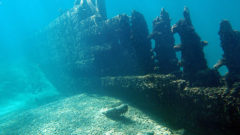
All that remained of the schooner was a bit of its hull – a tightly-packed row of wooden planks stretching 40 feet across the bottom of Lake Huron. Sunbeams easily penetrated the 20 feet of clear lake water above the wreck.
The site appeared lifeless.
There were no schools of emerald shiners, black-striped minnows or yellow perch in sight.
Great Lakes Now
https://www.greatlakesnow.org/2020/10/shipwreck-ecosystem-fish-great-lakes-species/
NCEI News Feed
http://www.ncei.noaa.gov/news//news/national-climate-202009
The Lake Erie Bill of Rights, the surprisingly successful ballot measure that conferred legal rights on Lake Erie, is hanging on by a legal thread. Read the full story by The Toledo Blade.
Great Lakes Commission
https://www.glc.org/dailynews/20201007-lake-stunt
Large swaths of Northeastern Minnesota’s wild country — including the Superior National Forest and North Shore state parks — are potential safe zones for nature to adapt to climate change, but only if they remain protected and undeveloped. Read the full story by the Duluth News-Tribune.
Great Lakes Commission
https://www.glc.org/dailynews/20201007-wild-areas-MN
A family property with a long history of Great Lakes maritime heritage is now under the control of the Michigan Maritime Museum. Read the full story by MLive.
Great Lakes Commission
https://www.glc.org/dailynews/20201007-maritime
In Port Clinton, Ohio, members of the Port Clinton Lighthouse Conservancy raised $47,000 to keep a bronze statue near the shores of Lake Erie. Read the full story by The Beacon.
Great Lakes Commission
https://www.glc.org/dailynews/20201007-lighthouse
Painesville, Ohio, is celebrating its new $14 million, 4,000-foot raw water intake pipe in Lake Erie, which has been in the works since November 2016. It was the longest microtunneling project in the United States by tunneling 25 feet below the bottom of Lake Erie’s shale and clay for a total of almost 4,000-feet for the 60-inch pipe. Read the full story by The Plain Dealer.
Great Lakes Commission
https://www.glc.org/dailynews/20201007-microtunneling
With fall now in full swing, animals are preparing for the winter and birds have begun their migration. At Michigan’s Lake Erie Metropark, you can view the great migration, at a designated watch site for raptor migration. Read the full story by The News-Herald.
Great Lakes Commission
https://www.glc.org/dailynews/20201007-migration
In preparation for the winter months, a freighter dropped 20,000 tons of salt in Hancock, Michigan, last week. It’s the first of two deliveries to the forming mining town in the Keweenaw Peninsula. Read the full story by MLive.
Great Lakes Commission
https://www.glc.org/dailynews/20201007-freighter
The highest number of waterspouts/funnels ever recorded took place recently over the Great Lakes during a seven-day period. Read the full story by CTV News.
Great Lakes Commission
https://www.glc.org/dailynews/20201007-waterspout
Great Lakes steel production ticked up by 5,000 tons last week but remains depressed by nearly a fifth so far this year, according to the American Iron and Steel Institute. Read the full story by the Northwest Indiana Times.
Great Lakes Commission
https://www.glc.org/dailynews/20201007-steel
Green Bay officials gathered Tuesday to celebrate the completion of the city’s five-year effort to remove more than 2,000 lead pipes. Read the full story by Wisconsin Public Radio.
Great Lakes Commission
https://www.glc.org/dailynews/20201007-lead
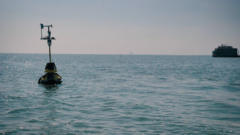
In June 2017, when President Donald Trump announced that the U.S. would withdraw from the Paris Climate Accords, three states had an immediate reaction and plan.
New York, California and Washington announced formation of the United States Climate Alliance calling it a “coalition that will convene U.S. states committed to upholding the Paris Climate Agreement and taking aggressive action on climate change.”
With that action, New York led Great Lakes states in the effort to reduce greenhouse gas emissions, establish clean energy plans and fund initiatives to meet carbon reduction goals.
Great Lakes Now
https://www.greatlakesnow.org/2020/10/great-lakes-states-climate-change-carbon/
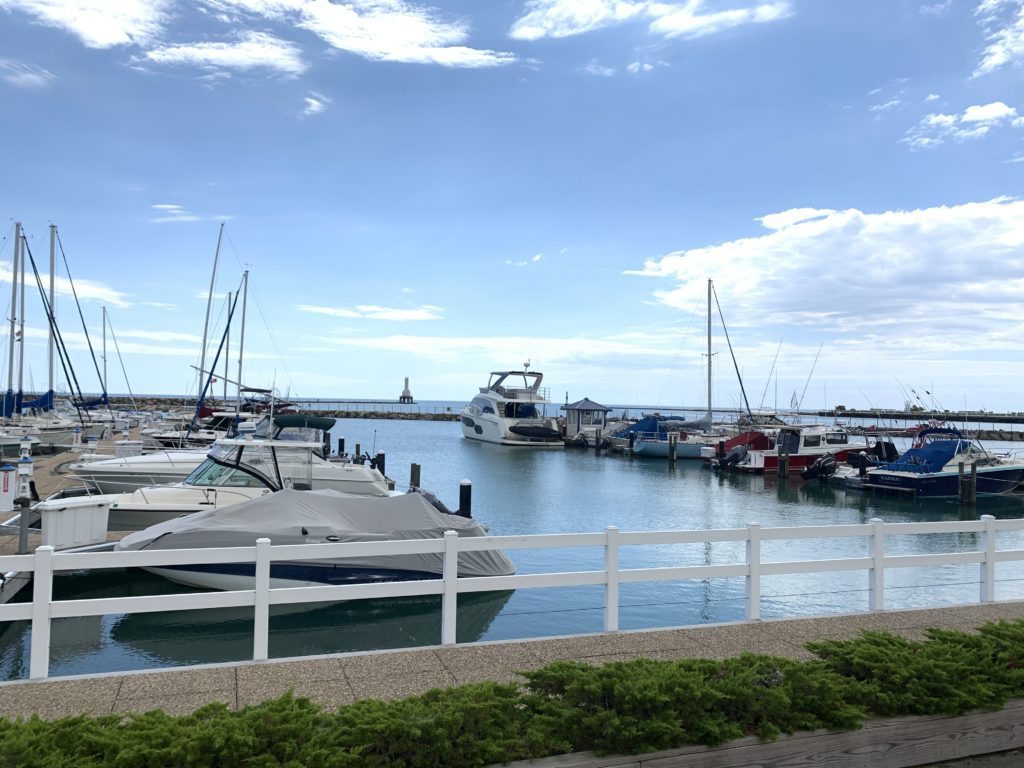
The Port Washington Marina. Image credit: Mari Mitchell
Port Washington Marina has been recertified as a Wisconsin Clean Marina. The marina was the first to join the program in 2010 and has continued to uphold a high standard of environmental stewardship.
“Our tenants are proud of the fact that we are a clean marina. They do their part to keep the marina safe and clean, and we want to support that,” said Dennis Cherny, harbor master, Port Washington Marina.
Cherny has been an active member of the Wisconsin Clean Marina Program since its launch. “He creates innovative solutions to uphold the best management practices set by the program,” said Theresa Qualls, Wisconsin Clean Marina Program coordinator. “Whether it’s collecting rainwater to water the beautiful landscaping at the marina or using fuel bibs to catch drips of gasoline while fueling boats, Cherny is constantly working to improve Port Washington Marina. Dennis and Port Washington Marina have really embraced the program and taken proactive steps to make Lake Michigan cleaner and safer for boaters to enjoy.”
Marinas, related industries and services contribute more than $2.7 billion to Wisconsin’s economy. Through the Wisconsin Clean Marina Program, marinas will prevent pollution and protect fish, wildlife and public health. They know that clean water is important to boaters and Wisconsin’s coastal communities.
The Wisconsin Clean Marina Program was launched in 2010, and 20 Wisconsin marinas have since taken steps to voluntarily adopt practices to become certified.
The Wisconsin Clean Marina Program is administered by the University of Wisconsin Sea Grant Program in partnership with the Wisconsin Marine Association, Wisconsin Coastal Management Program, Wisconsin Department of Natural Resources and Fund for Lake Michigan.
For more information:
Theresa Qualls, Wisconsin Clean Marina Program, (920) 465-5031, quallst@uwgb.edu
News Releases – Wisconsin Sea Grant
News Releases – Wisconsin Sea Grant
https://www.seagrant.wisc.edu/news/port-washington-marina-recertified-as-a-wisconsin-clean-marina/
Great Lakes Echo
http://greatlakesecho.org/2020/10/07/disappearing-history-sites-dropped-from-national-register-of-historic-places/
Michigan voters will decide next month whether to change how money can be spent under a popular program that buys land for public use and supports projects such as construction of trails, playgrounds and boat launches. Read the full story by The Associated Press.
Great Lakes Commission
https://www.glc.org/dailynews/20201006-michigan-natural-resources-fund
The Minnesota Department of Natural Resources has confirmed reports of zebra mussels in Lake Minnie-Belle, near Litchfield in Meeker County, after a watercraft inspector reported finding a zebra mussel on a four subsequent settlement samplers. Read the full story by West Central Tribune.
Great Lakes Commission
https://www.glc.org/dailynews/20201006-minnesota-zebra-mussels
Lake Erie’s Western Basin received an overall C+ on its report card produced by the University of Maryland Center for Environmental Science based on a variety of factors regarding the lake’s condition. Read the full story by Great Lakes Now.
Great Lakes Commission
https://www.glc.org/dailynews/20201006-lake-erie-report
As a part of a three year study including 61 ecosystem indicators and 40 organizations a report out from the 2019 Canada-United States State of the Strait Conference indicates improving ecosystem health including the return of birds of prey, lake sturgeon, lake whitefish and beaver; but also is evidence that these ecosystems are facing eight health challenges including climate change, eutrophication and algal blooms, and toxic substance contamination among others. Read the full story by Great Lakes Now.
Great Lakes Commission
https://www.glc.org/dailynews/20201006-great-lakes-ecosystem